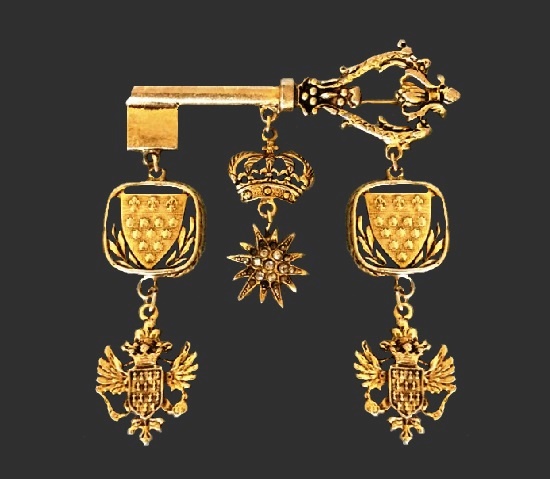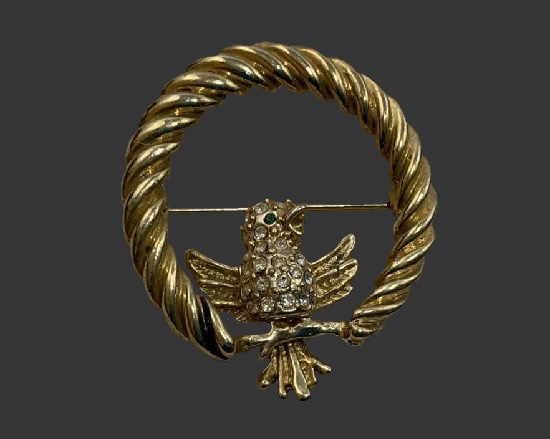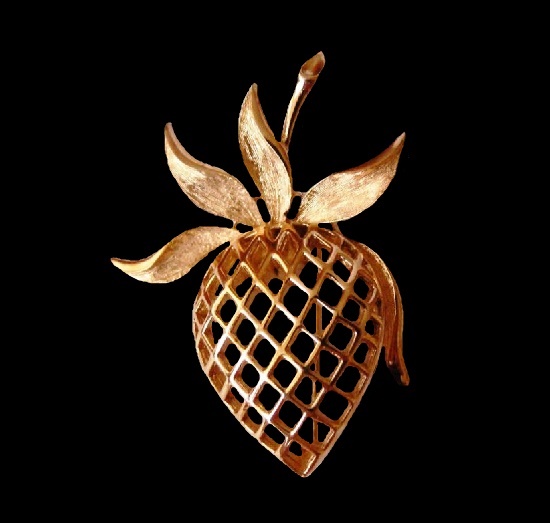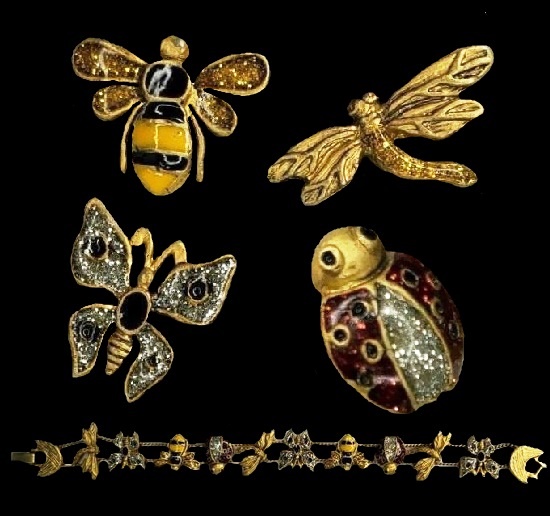Signed Movitex vintage costume jewelry

Bow ribbon brooch. Gold tone, rhinestone, faux pearl. 5.2 cm. 1970s. Signed Movitex vintage costume jewelry
Movitex vintage costume jewelry (1970s)
The history of the French costume jewelry brand Movitex began in 1974. It was a trademark of the eponymous company founded in 1947. The original name Mo-Vi-Tex included the first two letters of the brand founders – Morand and Viciot, plus three letters of the word “textile”. Initially, the company specialized in the production of textiles. The turning point in the successful business came in 1974, when Robert Seynave bought the company. First, he published Daxon ready-to-wear catalog offering clothes, shoes, and accessories. The company began selling products of their own trade marks, advertised in the catalog. Initially, the products included lingerie items and home comfort items, sold not through stores, but by mail and door-to-door sales. The company went through ups and downs and changes of owners.
Noteworthy, Movitex costume jewelry was produced in the 1970s and 1980s. Currently, the French company Movitex, headquartered at 5 Rue Des Precurseurs Villeneuve D’ascq 59650 (Nord), is mostly known for its footwear and clothing products. Today, handcrafted in 1970-80s classic design bijoux marked Movitex is very rare.
More »





